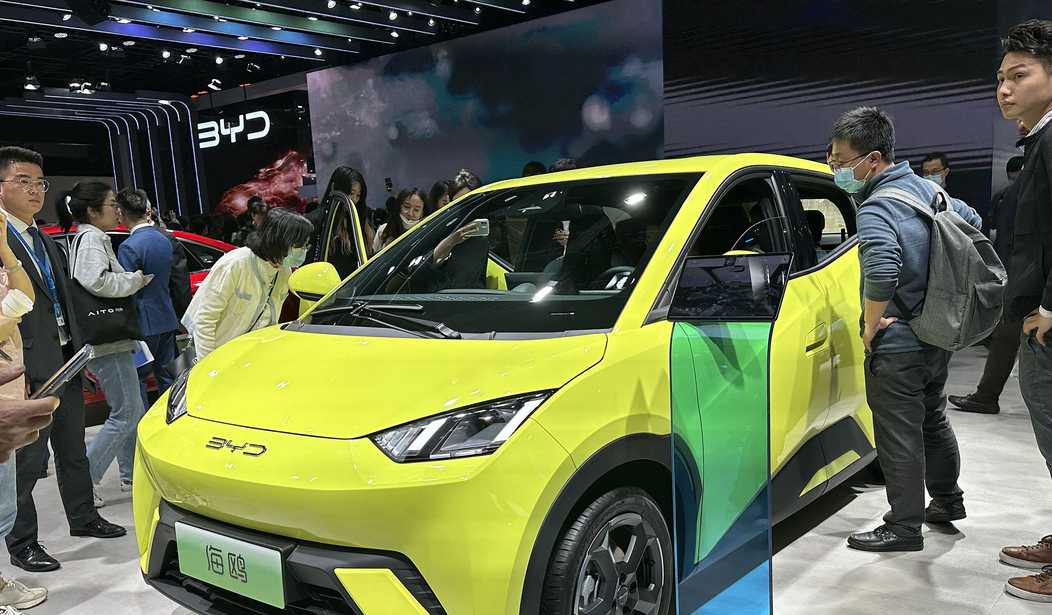Henry Ford’s 1908 Model T sold for $850, or about $25,000 in today’s money, but by 1925 could be had for just $260 in the mid-1920s, less than $4,400 today, and not bad when the average salary was about $3,000 a year. That made Americans mobile and changed everything.
There’s good news and bad news.
We’re starting another Industrial Revolution – call it Industry 4.0 (steam/gasoline power, electricity, computers, and now artificial intelligence). Factories, ports, and warehouses will run with a degree of efficiency unimaginable a couple of decades ago.
The bad news is that it’s happening fastest in China. If you’re not worried about what that means for us, you probably never visited the north of England, the former industrial heartland turned into a vast rustbelt. China already has 30% of the world’s manufacturing. It makes 27 million cars a year. We make 10 million. Until recently Chinese automakers made cheaper, lower-quality models. More affluent Chinese bought VWs and, if they could, BMWs. Now China’s BYD is outselling VW.
The Model T of the 21st century might be a vehicle that BYD unveiled this month at the Shanghai auto show, the electric Seagull, with a sticker price of $11,300. That’s less than a third the cost of the somewhat more powerful Chevy Bolt, although both get to 60 mph in five seconds. The average Chinese (or Malaysian, or Brazilian) can afford the Seagull, same as the average American could afford a Model T in 1908. BYD also makes a $140,000 supercar with 1,200 HP and a body designed by Pininfarina that can ride rings around a Ferrari.
How does BYD do it? The combination of robotics, artificial intelligence, and 5G broadband creates mind-boggling efficiencies. High-speed cameras take thousands of pictures a minute of every operation, upload them to the Cloud over 5G networks, and AI algorithms check for quality control and machine wear and tear. Machine learning optimizes the interaction of industrial robots. Downtime is next to zero.
It’s not just manufacturing. At Tianjin port, a 5G network links smart cranes that identify containers by bar code that place containers on autonomous trucks that take containers from ships to automated warehouses, where robots unpack, sort, and repackage the contents for transshipment. Giant boring machines mine coal deep underground while operators on the surface manipulate them with joysticks.
Recommended: U.S. Brings a Pea-Shooter to a Gunfight With China
None of this is happening by accident. China set out to dominate the Fourth Industrial Revolution. Two years ago, the former chief economist of the World Bank, Justin Yifu Lin, argued in a new book that China was like rising America at the end of the 19th century:
When the U.S. and Germany led the Second Industrial Revolution at the end of the 19th century, the United Kingdom had the highest level of income and technology. The U.S. and Germany were at a stage of catching up in terms of income levels. In terms of purchasing power parity, America’s GDP per capita in 1870 was 76.6% of the UK’s while Germany’s was 57.6% of the UK’s.
You may not be interested in industrial policy, but industrial policy is interested in you. “China should self-confidently use industrial policies to support the new industrial revolution. No matter whether a country is catching up or leading the development of new technologies and industries, its government should proactively overcome market failures to facilitate enterprises’ innovation efforts,” Lin wrote.
How far ahead is China? At the Mobile World Congress in Barcelona last February, a Huawei spokesman told me that China already has 6,000 private 5G networks installed in factories, compared to fewer than 200 in the rest of the world outside China. Why so many? “The government is making us do it.” As in any authoritarian system, there will be plenty of false starts. But BYD’s Seagull shows the proof of the pudding.
It’s a shame and a disgrace that we’re at risk of being left in the dust by China. In the late 1970s, the United States invented the digital economy, and Defense Department research grants made possible fast and cheap chips, LED and plasma displays, optimal networks, the Internet, and the Graphical User Interface—that is, all the components of the digital age.
The trouble is that we think of digital technology as a source of toys for consumers while China sees it as the driver of industry. Britain lost its edge in industry when the Empire, including the opium trade, offered quick riches to smart kids. Ambitious Britons went East of Suez, while Germans became chemistry professors and Americans rolled steel. Andrew Carnegie used British technology, notably the Bessemer process, but by 1900 he made more steel than the whole of the United Kingdom. Big Tech—consumer entertainment—has corrupted us the way the Empire corrupted the British.
What we need today is a Moonshot for manufacturing. Not just tax cuts for capital-intensive equipment, or saner environmental regulation, or cheap domestic energy, but a chance for America’s kids to make the kind of money that supports a family on a single income by working in high-tech manufacturing. I wrote a little book about this for Claremont Institute which you can download gratis here. Please look it over and, maybe, send it to your congressman.
If we don’t restore manufacturing, we will be poor, weak, and ultimately defenseless. We don’t have a lot of time left.










